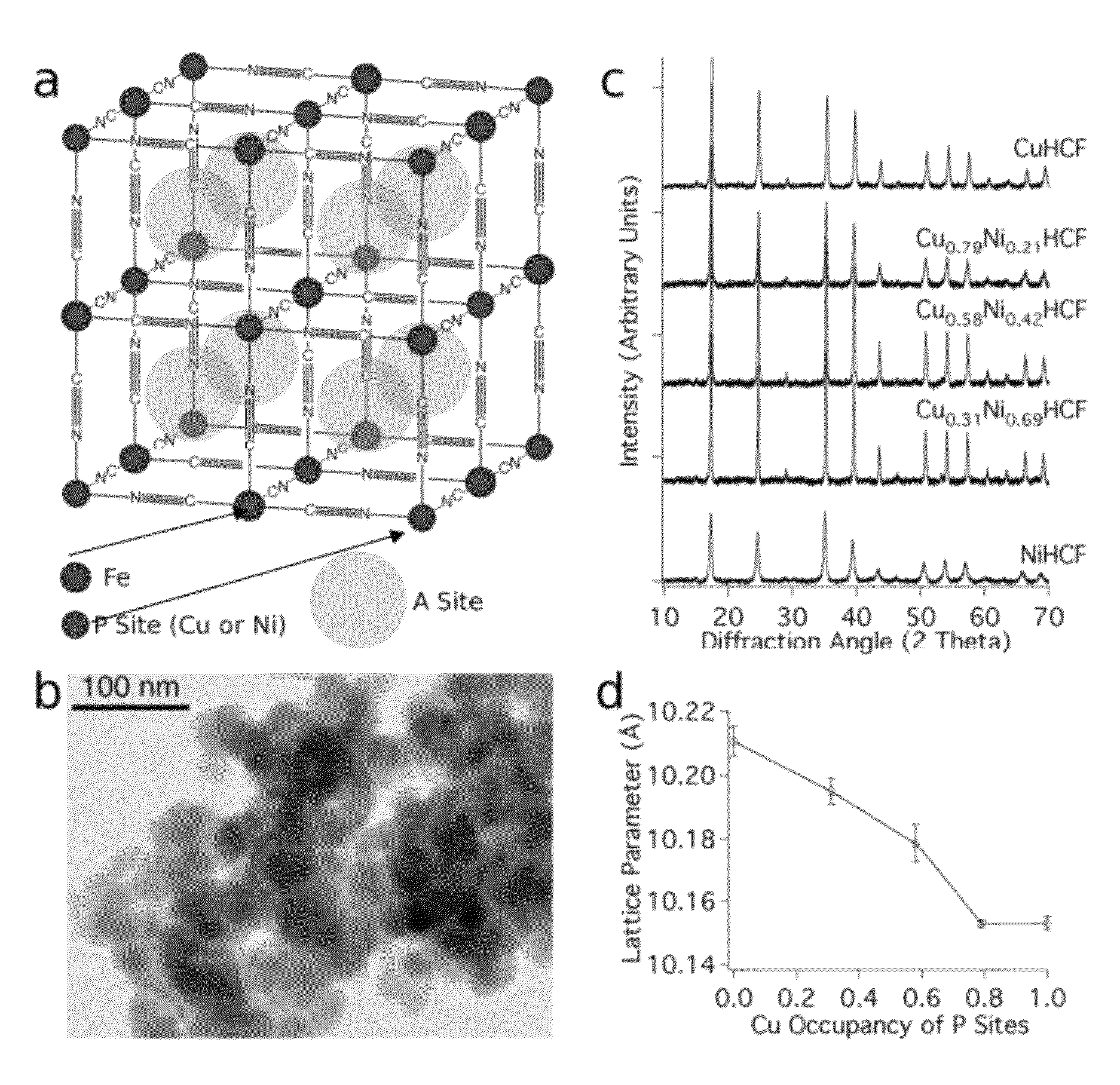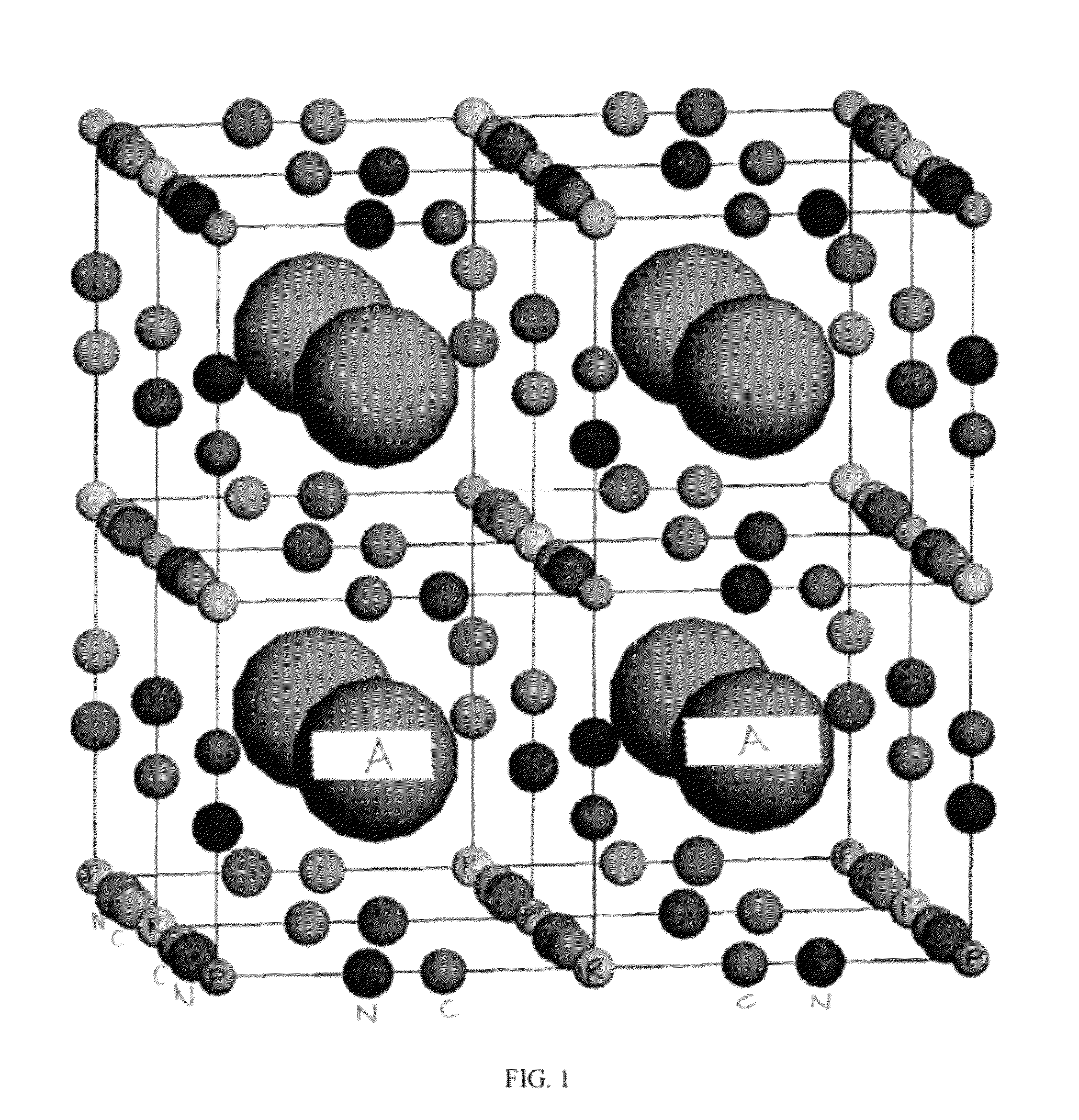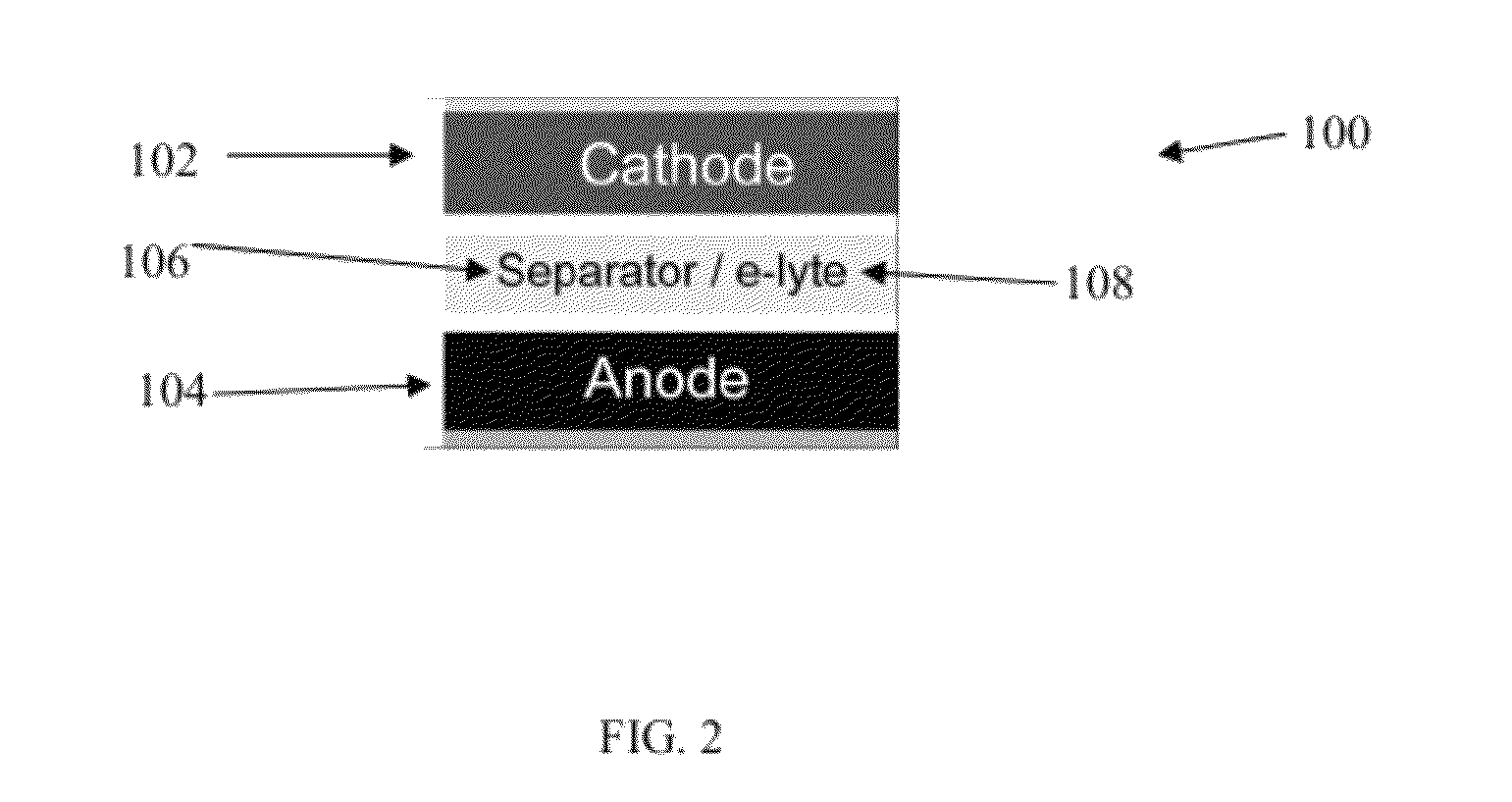High rate, long cycle life battery electrode materials with an open framework structure
a battery electrode and open framework technology, applied in the field of batteries, can solve the problems of insufficient cycle life of lead-acid batteries, inability to withstand deep discharge, voltage hysteresis, etc., and achieve the effects of high rate capability, high durability and inexpensive synthesizing
- Summary
- Abstract
- Description
- Claims
- Application Information
AI Technical Summary
Benefits of technology
Problems solved by technology
Method used
Image
Examples
example 1
Copper Hexacyanoferrate
[0092]This example describes copper hexacyanoferrate (“CuHCF”), whose electrochemical reaction can be represented as KCuFeIII(CN)6+xK++xe−=K1+xCu[FeII(CN)6]x[FeIII(CN)6]1-x. The theoretical specific capacity for anhydrous KCuFe(CN)6 is about 85 mAh / g for some embodiments. In practice and for some embodiments, capacities of about 60 mAh / g and lower are generally observed, as the framework structure contains zeolitic water. Inductively coupled plasma mass spectrometry of CuHCF synthesized by a bulk precipitation reaction found a K:Cu:Fe ratio of about 0.71:1:0.72. Following previous conventions for the hydration of the crystal structure, the formula for the material on the basis of copper is K0.71Cu[Fe(CN)6]0.72.3.7 H2O. The theoretical specific capacity for the material with this formula is about 62 mAh / g, which agrees with the observed specific capacity. As the exact water content varies with temperature and humidity, a capacity of 60 mAh / g was used for the de...
example 2
Nickel Hexacyanoferrate
[0103]This example describes nickel hexacyanoferrate (“NiHCF”), whose electrochemical reaction can be represented as ANiFeIII(CN)6+A++e−=A2NiFeII(CN)6, where A+ is a cation such as sodium or potassium. The following describes the unusual behavior of a high capacity battery electrode containing bulk NiHCF powder prepared by a chemical precipitation method.
[0104]NiHCF has the Prussian Blue crystal structure, in which transition metal cations such as Fe and Ni are bound by bridging CN ligands, forming a face-centered cubic structure (see FIG. 6). In the case of NiHCF, Fe is six-fold carbon coordinated, while Ni (e.g., Ni2+) is six-fold nitrogen coordinated. The resulting framework has large channels oriented in the directions, through which hydrated cations such as K+ and Na+ can diffuse. These cations occupy the interstitial “A” sites at the center of each of the eight subcells of the unit cell. Full occupancy of the “A” sites is achieved upon full reduction of...
example 3
Copper Hexacyanoferrate and Nickel Hexacyanoferrate
[0114]This example describes additional measurements on CuHCF and NiHCF of some embodiments. To examine the effect of insertion species on the electrochemical properties of bulk CuHCF and NiHCF, these materials were cycled in aqueous electrolytes including lithium, sodium, potassium, or ammonium ions.
[0115]Syntheses of CuHCF and NiHCF nanopowder were performed using a co-precipitation method. Simultaneous, dropwise addition of about 40 mM copper or nickel nitrate, and about 20 mM potassium ferricyanide into deionized water allowed for controlled co-precipitation of solid CuHCF or NiHCF products. The synthesis of CuHCF was performed at room temperature, while the synthesis of NiHCF was performed at about 70° C. These solid products were filtered, washed with water, and dried in vacuum at room temperature. Up to about 3 g of product was produced during each synthesis, and these syntheses can be readily scaled to produce larger quantit...
PUM
 Login to View More
Login to View More Abstract
Description
Claims
Application Information
 Login to View More
Login to View More - R&D
- Intellectual Property
- Life Sciences
- Materials
- Tech Scout
- Unparalleled Data Quality
- Higher Quality Content
- 60% Fewer Hallucinations
Browse by: Latest US Patents, China's latest patents, Technical Efficacy Thesaurus, Application Domain, Technology Topic, Popular Technical Reports.
© 2025 PatSnap. All rights reserved.Legal|Privacy policy|Modern Slavery Act Transparency Statement|Sitemap|About US| Contact US: help@patsnap.com



